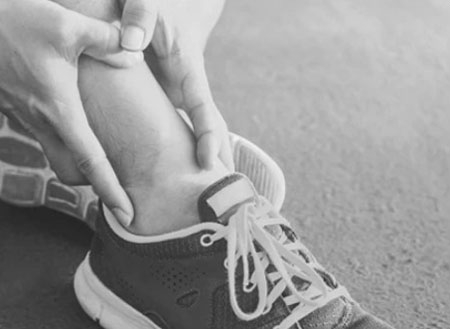In our world of sports injuries here at Orthopaedic Associates of Wisconsin, the words ‘sprain’ and ‘strain’ get tossed around quite a bit. In fact, sometimes the two terms are used interchangeably and incorrectly so. Sprains and strains are two different types of injuries that can occur in the soft tissues of the body. Let’s break it down.
A sprain is an injury to a ligamentous tissue, which connects a bony structure to another bony structure such as the medial collateral ligament in the knee. Ligaments help provide stability to a joint; thus, allowing it to function appropriately. When a ligament sustains undue stress at the time of injury, the tissue can tear to varying degrees. Grade I sprains involve a stretching of the fibers that make up the ligament whereas a grade III sprain is a complete tearing of the fibers of that ligament. Depending on which ligament is damaged, and the severity thereof, surgical intervention could be required. Often times, ligament sprains heal on their own with a little extra TLC and perhaps a short period of immobilization. A prime example of this is a lateral ankle sprain of the ankle. This is one of the most common injuries we see and rarely requires any surgical intervention, even though the ample swelling and bruising leads one to believe the injury is possibly severe. These ligaments have an excellent blood supply and heal well on their own with rest, ice, elevation, and a controlled motion activity progression. The frustrating aspect of sprains is that they take months to heal completely. It can be an excruciatingly long process, especially for athletes itching to return to sport. Unfortunately, the process cannot be sped up significantly by any interventions. Time and patience is key.
Grade III sprains could require surgical intervention if the stability of the joint is compromised and the patient wishes to maintain an active lifestyle. If a young person tears his or her anterior cruciate ligament (ACL), surgical reconstruction is recommended for continued years of athletic prowess. Alternatively, if an older adult tears that same ligament, often times conservative management is recommended because the lack of ACL does not affect the daily activity of the average older adult. That ligament will not heal on its own, but the knee can continue to function without it. If the medial collateral ligament is also damaged during injury, it has the ability to heal over time due to its location and available blood supply.
A strain, on the other hand, is an injury to a muscle or tendon. Tendons are tissues that connect muscles to bones. Tendon injuries are also graded in severity with grade I strains being of mild severity and grade III strains greatly reducing the function of a muscle due to significant or complete tearing of the involved fibers of the muscle belly or tendon. If the strain occurs in the muscle, most often nonsurgical management in the form of controlled motion, gentle stretching, and eccentric strengthening is the treatment plan. If the muscle has completely torn from its attachment site, surgical intervention may be warranted to re-attach the fibers to regain function. If a tendon ruptures, surgery is most-often the preferred treatment, especially for active people. Muscle function depends on the tendon functioning properly to create the pulling force that subsequently moves a joint effectively. Depending on the location and severity of the tear, as well as the lifestyle of the patient, conservative management may be sufficient and even recommended.
Strains and sprains are common and often require orthopedic consultation to determine the most appropriate course of treatment. We are happy to schedule an appointment for you with one of our board-certified specialists who will be able to tell you if you sustained a sprain, strain, or something entirely different!

